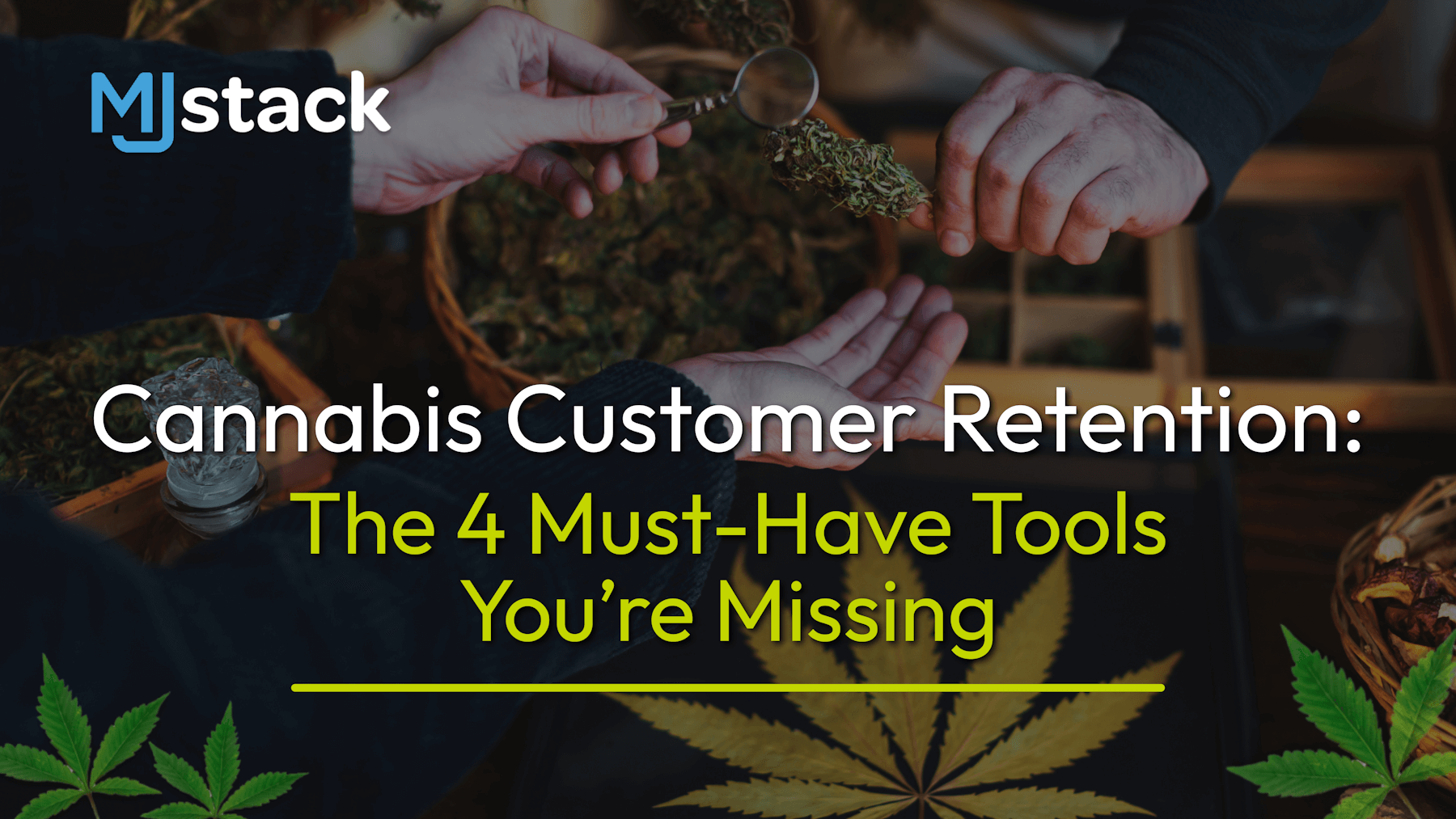Co-authored by Adam Benko, MJstack & Kevin Jones, MainStem
Everything comes with a cost. The goal of any business should be to plan their investments strategically to reduce as many unnecessary costs upfront while still building for the future.
Tech debt is usually the result of making poor investment decisions too early on in your business or partnering with technology vendors that have accumulated their own tech debt, therefore prohibiting them from delivering timely product roadmaps.
In this article, we’re going to share 6 tips to help you avoid getting locked into a technology or supply agreement that won’t grow with your operation.
Before we get to the tips though, let’s dig deeper into what tech debt actually looks like for your cannabis operation. When it comes to the supply chain side of cannabis, you might want to take shortcuts or go with the cheapest option. While piecemealing the supply buying process might sound like a good idea at first, you end up with a hodgepodge of various tools and technologies that might not integrate nicely with each other and limit your ability to scale.
Similarly for dispensaries, if you sign up for a vendor that you can’t afford, or they’re known to have a massive amount of tech debt with their products and services already, your profit margins will suffer and you’ll be locked into an agreement with a technology that doesn’t deliver what you need for a cost you can’t afford.
As a cannabis business you have to remember that the journey from your first supply order to your first customer sale is constant, which presents numerous opportunities to accumulate tech debt. Not all debt is bad, but how can you become a savvy business owner to spot the difference and make the smartest decisions with the greatest return on investment?
1. Invest based on current needs while also considering the bigger picture.
Tech debt arises during a project or situational constraint. When operators decide they do not have time to develop a unique business plan, and define their north star, they begin a reckless journey towards unnecessary tech debt. Understanding your business model and designing a road map are necessary for longevity and will help any business scale. However, those that are flexible, and open to change – while remembering the goal they are trying to solve for – will be more successful in the long run.
Think of tech debt like a loan. There is a need for the money. You go to the bank to take out the loan, with a goal in mind on what you’ll spend it on. You can either take a loan out that is easily manageable and helps you meet a current need, or a larger loan that will accumulate interest and may be harder to pay back – and, unfortunately, all debt has to be paid back. By only taking on debt that meets your current circumstance, you allow yourself the flexibility and luxury to pivot as needed. While that three year software contract sounds just right when it comes to price, it may ultimately be hindering your ability for growth.
Tech debt along your journey isn’t bad and is ultimately a conscious choice. By allowing yourself to be flexible, and learn throughout the process, you’ll be able to use tech debt as a tool to accomplish your goals faster. Make sure to continue to “pay the debt” back along the way, adjusting your business plans and keeping an open mind as to what will help the progression towards your north star.
2. Be wary of vendors with outdated systems.
Most dispensary and cultivation companies incur unnecessary tech debt when they wait too long to upgrade their systems. It’s a lot easier to keep with your older systems than to rework the platform, but at what cost does this come to your business — as well as the end-user?
Building and rebuilding code is a natural part of being a technology company. If a vendor is cutting corners for convenience or hiring entry level coders in an effort to save money, that should be a definite red flag. During any evaluation process always make sure you get clear answers on the product evolution and that you understand the product development process.
It is imperative that you have a distinct picture of the vendor’s tech hygiene. This includes things like asking if a vendor’s product or platform can scale with your operation, and knowing how frequently they debug their systems, what kind of security protocols are in place to prevent your business from experiencing outages, the kind of talent they hire and how frequently they upgrade their systems.
3. Constantly evaluate your business and technology.
Because this industry is still so young, there are new technology vendors constantly entering the market. That’s why being flexible in your technology decisions as a business is key. What works for your cannabis operation now, might not serve you in the future, especially considering the fact that new vendors are always evolving to develop better, faster and more efficient cannabis software.
Don’t become married to one vendor or platform. Instead, always be open to change and improvement. If you want to remain competitive and continue to deliver the best customer experiences, you need cannabis technology solutions that scale. The service or platform you select in year one of business will very rarely be the same system or software that you rely on when you are in year five and are ready to expand to multiple locations or even become a multi-state operator (MSO).
You might be tempted to stay with a particular vendor or platform for cost or convenience but if your technology doesn’t support your business at every stage of its growth, you’ll be paying for something that isn’t serving your or your customers’ needs. Having the right technology partners is also essential for meeting state-mandated compliance regulations, which vary by market.
4. Consider good, better, best solutions.
With the cannabis industry evolving at a rapid pace, ahead of federal legalization, managing every detail of operations from procurement to sales is complex. No one vendor, at this stage in the industry, can claim they solve for all aspects of the supply chain, especially when factoring in the constantly changing landscape. Those that claim to do will fall into three categories: They are lying. They will fail because someone will come along and do it better. Or you’ll fail because they’ll lack the infrastructure to support you.
As the industry progresses, providers have emerged that identify a niche pain point and offer a simple, sophisticated solution. By seeking out a best of breed ecosystem that is integrated, allowing for data flow from one application to another, operators can successfully scale and avoid unnecessary tech debt with overlapping functionality and unnecessary costs.
When talking to vendors make sure to ask what specific problem the company targets and how they fit into the cannabis ecosystem. Do they integrate or work with other providers? Have they successfully navigated the industry in all of its complexity or are they a new vendor jumping into the industry with a “head start?” Never immediately go with the first vendor you meet and never make the decision based on price.
Ensure their company’s north star lines up with your own goals and business model. Not all solutions will work, but the right solution will work for you.
5. Create a cohesive ecosystem across the supply chain.
Unfortunately, cannabis operators are used to putting out fires, opting to spend less up front because of lack of capital and relying on vendor relationships for individual products. Across the supply chain, they are also forced to deal with unreliable, non-compliant, or cost ineffective vendors and supplies due to the lack of standardization within the industry. The result of these two factors ultimately lead operators to a model where they are dependent on single supply chain infrastructure, causing unnecessary spikes in prices and expanded wait times during a crisis.
By adopting a holistic and cohesive ecosystem across the supply chain, and constantly evaluating products and services, operators can strategically pivot in the face of adversity. Ensure you have full visibility into the products and services you’re using across your entire organization, and then make sure you have an easy way to seek out complementary alternatives.
Sure, you may feel there’s no need due to a great relationship with a vendor. However, by having a book of a business of similar products and services that you can easily reference, you’re ensuring your ability for business continuity during a supply chain disruption. The vendor you have a relationship with isn’t always going to be able to deliver. You should be ready. Easily being able to source similar products and services is just good business and an easy way to eliminate avoidable tech debt.
6. Don’t be afraid to bring in expert help and guidance.
Knowing when you need help isn’t a sign of weakness, it means that you are working smarter. This industry moves fast and new players are always coming to the cannatech market. Admitting that you don’t know what you don’t know and finding experts who can help guide your business in the right direction can save you time, money and headaches in the long run.
Not to mention, your attention is better focused on what you do best — operating your cannabis business to serve your customer base. Technology serves as the backbone, but it would be unrealistic to think that you should also be an expert in technology.
Whether you’re just starting out or are a seasoned entrepreneur, tech debt is inevitable. By using these tips and identifying tech debt early on in the process, you’ll find your growth much more manageable while avoiding large missteps.
If you’re stuck in your vendor search or are feeling overwhelmed by the process, MJstack can help you navigate vendor evaluations to alleviate this stress while also helping you get clear on your business goals. Their free service helps point cannabis retailers and operators in the right direction when it comes to identifying the right tech partners to drive revenue and customer growth. Schedule your free MJstack consultation today.
For more information on how to navigate tech debt across the supply chain, MJstack has partnered with MainStem, the leading B2B cannabis e-commerce marketplace and SaaS technology. To learn more about MainStem, check out the website at www.mainstem.io.













